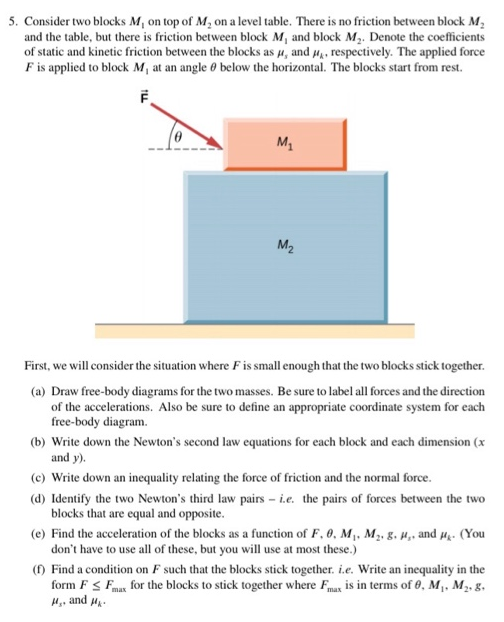Consider two blocks M1 on top of M2 on a level table. There is no friction between block M2 and the table, but there is friction between block M1 and block M2. Denote the coefficients of static and kinetic friction between the blocks as μs and μk, respectively. The applied force F is applied to block M1 at an angle θ below the horizontal. The blocks start from rest. First, we will consider the situation where F is small enough that the two blocks stick together. (a) Draw free-body diagrams for the two masses. Be sure to label all forces and the direction of the accelerations. Also be sure to define an appropriate coordinate system for each free-body diagram. (b) Write down the Newton's second law equations for each block and each dimension (x and y). (c) Write down an inequality relating the force of friction and the normal force. (d) Identify the two Newton's third law pairs - i. e. the pairs of forces between the two blocks that are equal and opposite. (e) Find the acceleration of the blocks as a function of F, θ, M1, M2, g, μs, and μk. (You don't have to use all of these, but you will use at most these. ) (f) Find a condition on F such that the blocks stick together. i. e. Write an inequality in the form F ≤ Fmax for the blocks to stick together where Fmax is in terms of θ, M1, M2, g, μs, and μk.
